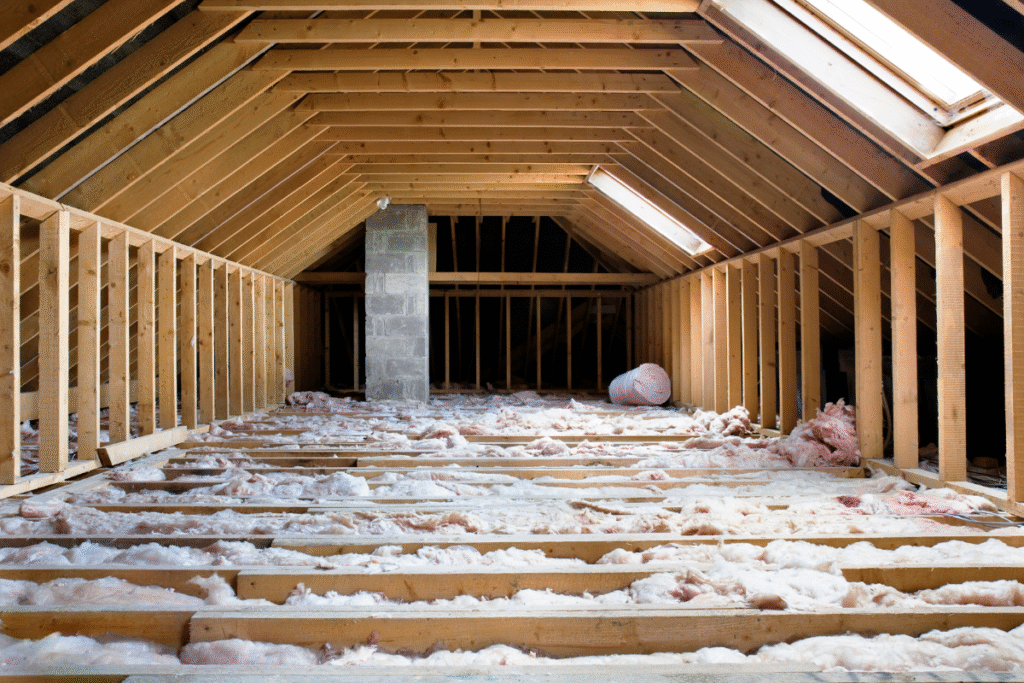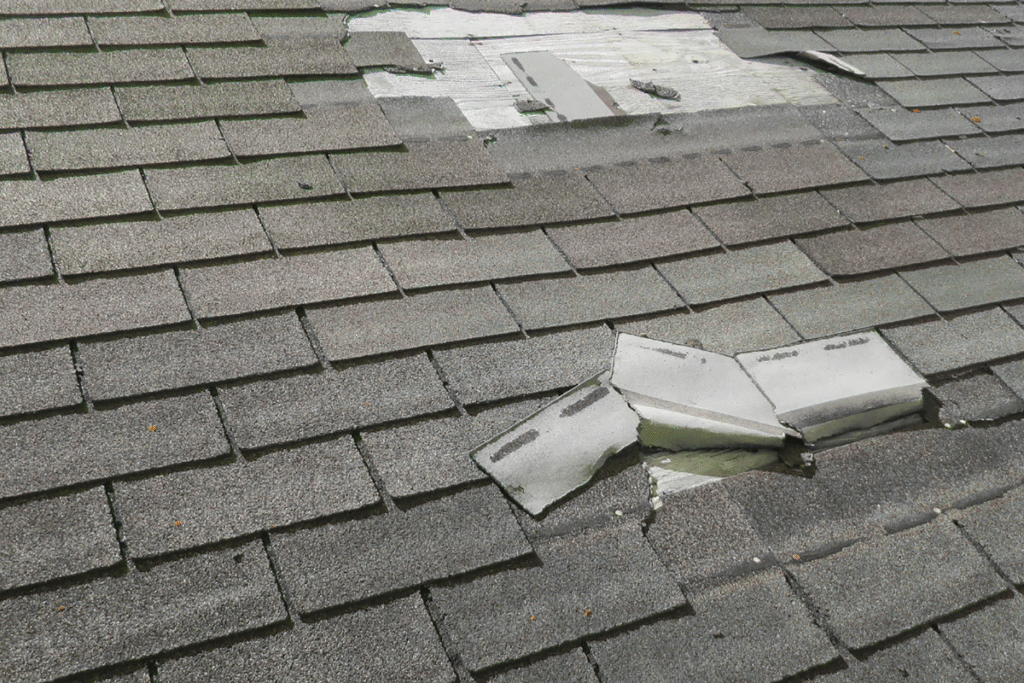Did you know proper attic ventilation could mean the difference between a sturdy roof and costly storm damage? Many homeowners overlook how attic airflow affects roof health, especially during Florida’s relentless storms. Without it, moisture and heat build up, weakening materials and leaving your roof vulnerable.
Expert roofing contractors in Pinellas County, FL, like Mitchell Roofing Company, understand how critical ventilation is to protecting your home. We’ve seen firsthand how small adjustments can prevent big problems when the weather takes a turn. If you’re worried about storm season, it’s worth checking where your attic might need some help.
Below, you’ll learn how attic airflow and ventilation can affect your roof’s resistance to storm damage.
Prevent Rot in Wooden Structures
Trapped moisture in an unventilated attic often leads to significant problems like wood rot. This weakening of wooden supports can significantly reduce your roof’s ability to handle strong winds and heavy rain during a storm. Rotting beams may crack or collapse, endangering your home’s safety and causing costly repairs.
Ensure your attic stays well-ventilated to avoid these issues. Adequate airflow lowers moisture and stops humidity from building up. Solid, dry beams provide a strong foundation for your roof, allowing it to stand tough against harsh weather conditions. Keep ventilation systems working properly to protect your home and prevent damage over time.
Protect Roofing Materials from Heat Damage
Extreme attic heat accelerates the deterioration of roofing shingles, compromising their longevity and effectiveness. Adequate attic ventilation helps mitigate these adverse effects by releasing trapped heat and maintaining a balanced temperature within the attic.
Prevent Shingle Cracking and Disintegration
When roofing shingles are exposed to prolonged heat buildup, they can lose essential oils, leading to brittleness and cracking. Cracks allow moisture to infiltrate the roof’s underlayers, causing further structural damage and increasing the risk of mold growth. Proper ventilation minimizes heat retention. This preserves the flexibility and structural integrity of shingles over time.
Reduce the Risk of Decking Delamination
Attic heat can also impact the roof decking, which serves as the base layer for shingles. Excessive heat dries out the adhesives in the decking, weakening its bond with the layers above and leading to delamination. Maintaining consistent attic airflow protects the decking from severe stress that could compromise its supportive function and lifespan.
Mitigate Premature Aging of Roofing Systems
Overheating in the attic speeds up the aging process of the entire roofing system, from flashing to underlayment. Materials such as asphalt and sealants may degrade prematurely, leaving the roof more vulnerable to leaks and storm damage. Ventilation cools the attic and prevents excessive strain on the roof’s infrastructure.
Equalize Air Pressure During Storms
Intense storms often bring heavy winds that create uneven air pressure inside and outside your attic. This difference in pressure can push against your roof, weakening its structure over time. Proper attic ventilation helps balance the air pressure, which protects your roof during extreme weather.
Pinellas County, FL, roofing contractors know the importance of adequate ventilation for storm-ready roofs. Mitchell Roofing Company specializes in installing and maintaining ventilation systems that reduce stress on your roof. With their help, you can ensure your home stays safe, even during powerful storms.
Minimize Condensation During Sudden Weather Changes
Strong ventilation in your attic keeps the air flowing and helps balance indoor and outdoor temperatures. This balance reduces the chances of water droplets forming on cold surfaces, which can lead to mold and wood rot. Keeping your attic well-ventilated protects the structure of your home during extreme weather.
Proper insulation is another important step to prevent moisture. Warm air rising from your living spaces can carry humidity into the attic. Insulation slows this movement, cutting down on humidity levels and protecting sensitive materials like insulation and roof decking from damage. A well-maintained attic can save you from costly repairs and keep your house safe.
Prevent Insulation From Losing Effectiveness
Moisture in your attic can cause insulation to lose its ability to block heat and cold effectively. When insulation gets damp, it clumps together and leaves gaps where air can flow through. This makes your home harder to heat in the winter and cool in the summer, which means higher energy bills.
Proper ventilation in your attic helps air move freely and keeps insulation dry. Dry insulation lasts longer and works better, helping to maintain a comfortable temperature in your home. Good airflow also reduces the chance of mold and protects the roof from damage caused by trapped moisture.
Keep Roofing Adhesives Strong
Excessive heat in an attic can weaken the glue that holds shingles in place. When shingles lose their hold, they become more vulnerable during strong storms or high winds, putting your home at risk. This damage can lead to leaks and costly repairs that could easily be avoided.
Proper attic ventilation helps control the temperature and protects the shingles. Cooler air flows in and pushes hot air out, reducing the strain on roofing adhesives. Consistent airflow ensures your roof remains durable and ready to handle harsh weather conditions.
Reduce Rust in Metal Components
Ventilation plays a key role in expelling humid air from enclosed spaces. Keeping humidity levels low**** significantly reduces the risk of rust forming on metal elements like flashing, fasteners, and vents. Rust-free materials maintain their integrity and ensure the structure remains safe and secure.
Proper ventilation also minimizes water buildup, which can lead to long-term damage during heavy storms. Without rust on critical components, the chance of leaks or structural failures due to corrosion decreases.
Here are some details you should know about the importance of rust prevention:
- Rust weakens metal by causing it to corrode, making components brittle over time.
- Protecting fasteners and flashing from rust helps keep them strong, especially during intense weather conditions.
- Rust-free vents allow proper airflow, maintaining a balanced and damage-free system.
With the help of our roofing contractors in Pinellas County, FL, you can ensure that your roof stays rust-free and functional for a long time.

Prevent Mold Growth After Heavy Rain
Good ventilation is key to keeping your attic dry after heavy rainstorms. When air moves freely, it pushes out moist, stagnant air that can lead to mold. Mold thrives in damp spaces and can cause serious damage to the wood and other materials in your roof.
Inspect your attic after storms for leaks or damp areas. Fixing leaks quickly helps prevent moisture from building up. Make sure vents are clear of debris so fresh air can flow in and out. Keeping your attic well-ventilated and dry will protect your home and keep your roof strong.
Protect Roof Seams from Leaking
Moisture that builds up in unventilated attics can damage your roof over time. Water droplets often form along seams, which are the weakest parts of the roof. When storms hit, these seams may start to leak, leading to costly repairs or damage inside your home.
Good ventilation helps keep condensation away from critical areas like roof seams. Fresh air flowing through the attic space prevents moisture from gathering. This strengthens the roof’s connections and ensures that it stays secure, even during heavy rain. Proper attic ventilation is key to extending the life of your roof and protecting your home.
It’s Roofing Contractors in Pinellas County, FL
Attic ventilation isn’t just about comfort; it’s vital to keeping your roof ready for storms. If you’re unsure whether your attic is helping or hurting your roof, Mitchell Roofing Company can guide you. Contact us today and work with roofing contractors in Pinellas County, FL, who know how to protect your home from Florida’s toughest weather.
Key Takeaways
Why is attic ventilation important for preventing storm damage?
Proper attic ventilation reduces moisture and heat buildup, which weaken roof materials and compromise structural integrity. Balanced airflow enhances your roof’s ability to handle strong winds and heavy rain during storms.
How does poor attic airflow lead to mold and rot?
Trapped moisture in an unventilated attic encourages mold growth and wood rot, damaging beams and reducing roof strength. Good ventilation keeps the air moving, stopping humidity from settling and protecting wooden structures.
Can attic ventilation protect roofing shingles from heat damage?
Yes, ventilation releases trapped heat, preserving the flexibility and integrity of shingles. This prevents cracks and disintegration, ensuring your roof stays durable for longer.
How does ventilation help reduce air pressure during storms?
Ventilation balances air pressure inside and outside your attic, lessening the force heavy winds place on your roof. This protection helps your roof withstand intense weather conditions.
What role does ventilation play in rust prevention?
Attic ventilation expels humid air, reducing the risk of rust on metal components like flashing and fasteners. Protecting these elements keeps your roof strong and prevents leaks caused by corrosion.

